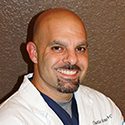Urgent Care EMR Practice Management Tools Help You Do More For More Patients
Spend more time doing what you do best — caring for patients. With Experity’s urgent care EMR software, you’ll have the support of a solution that takes efficiency to a new level.
Simplify Charting
Pre-built, complaint-driven logic allows you to chart 80% of the most common urgent care center visits in < 60 seconds with fewer clicks
Speed Up Workflow
Real-time chart updates across multiple users reduce friction and improve efficiency so you can see more patients
Increase Accuracy
Automated tasks and calculations reduce the risk of error
Monitor Performance
Actionable data guides decision-making and measures clinical, operational, and financial performance









